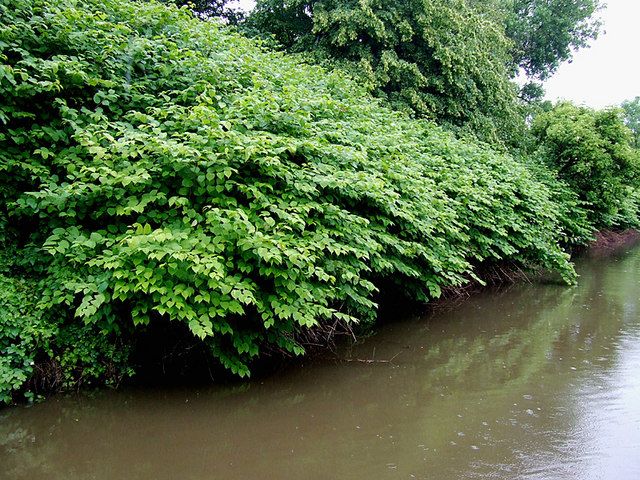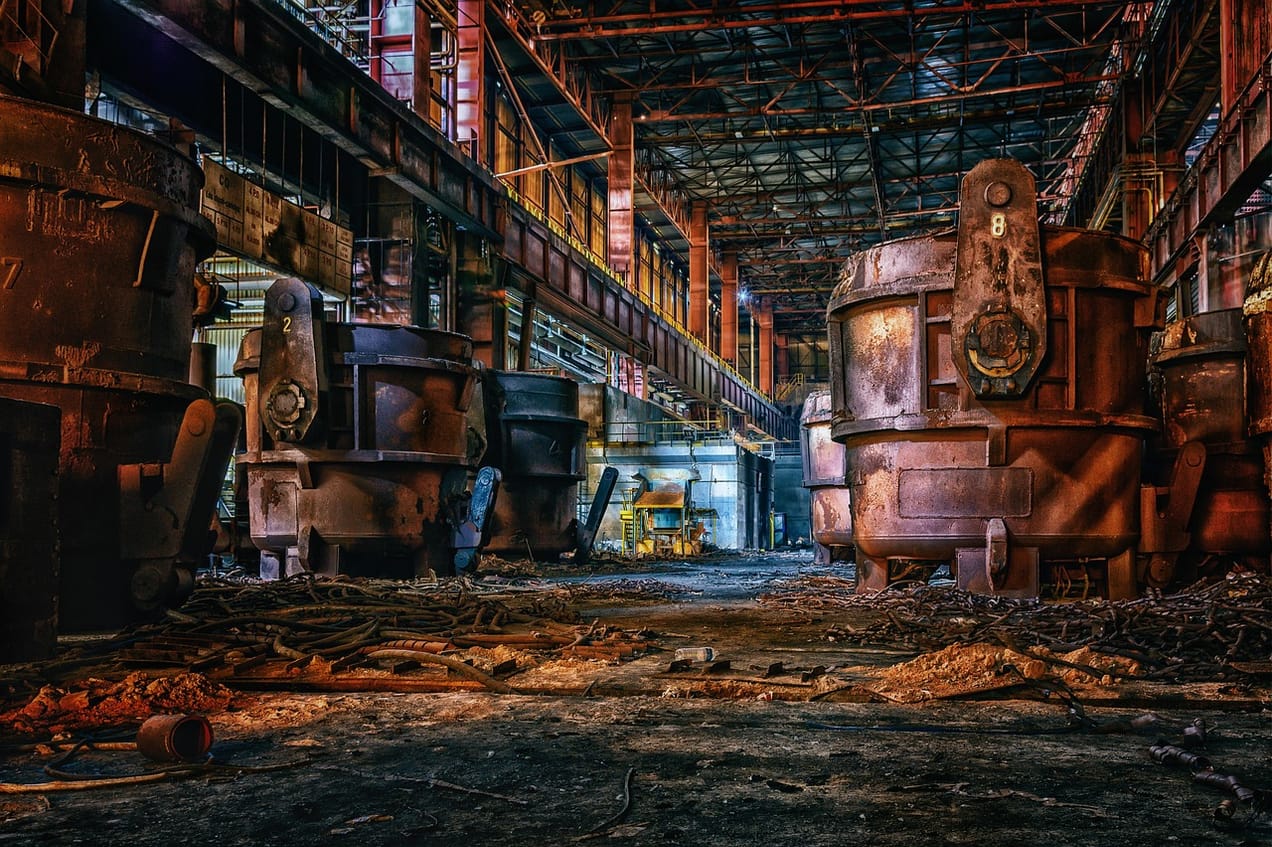
PFAS - paints, pesticides and 'puters.
'Forever chemicals' are facing increasing scrutiny over their potentially harmful impacts on the environment and our health.
Summary: With growing awareness of the potential harm that persistent, bioaccumulative and toxic chemicals such as certain PFAS can cause, increasing restrictions on their use and the hunt for alternatives - either drop in replacements or changes to processes - is likely to accelerate. We look at three key use cases for PFAS: paints, pesticides and 'puters (semiconductors).
Why this is important: Upcoming legislation limiting the production of some or all PFAS could necessitate changes - sometimes radical changes - to business models.
The big theme: Some intermediates that have been historically central to proving desired physical properties have been found to be harmful if allowed to accumulate in the environment. Finding ways of removing them from the environment or indeed finding alternatives require innovation and behavioural change. PFAS are one example. The estimated global market for PFAS is $28 billion - a fraction of the market size for all chemicals at $4.7 trillion. Of course that doesn't reflect the true value of the market given that PFAS are an intermediate that have been important conveyors of physical properties to many finished products and the processes to make those products. However, just the direct health care costs alone to address the impacts of bioaccumulation of PFAS could be more than $90 billion per annum in the European Economic Area (EEA) alone.

The details
What's all the fuss about PFAS?
Per- and poly-fluoroalkyl substances or PFAS are a group of human-made compounds (they do not occur naturally) that contain carbon-fluorine bonds, which is one of the strongest bonds in organic chemistry. They are commonly referred to as “forever chemicals” because they don’t naturally break down over time. There are more than 10,000 chemicals classified as PFAS and they have been used commercially for more than 80 years. They are very effective at repelling water and oils, are good surfactants (wetting agents) as well as being good insulators. As a result they have been used extensively in food packaging, plastic containers, non-stick pans, fabrics, electronics, fire-fighting foams, detergents and cosmetics amongst others.
You will also hear about PFOS (perfluorooctanesulphonic acid) and PFOA (perfluorooctanoic acid) - they are just types of PFAS. Some PFAS can occur as microplastics such as PVF (polyvinyl flouride) and PTFE (polytetrafluorethylene).
ChemSec estimate that the global market for PFAS is $28 billion - a fraction of the market size for all chemicals at $4.7 trillion. Of course that doesn't reflect the true value of the market given that PFAS are an intermediate that have been important conveyors of physical properties to other finished products such as those mentioned above.
As well as being 'forever' they are increasingly 'everywhere'. For example PFAS have been found in 83% of US waterways across 34 states. Sewage sludge, marketed as 'biosolids' has been found to have polluted both cropland and also home fertilisers with PFAS. They have even been found in Arctic ice, where melting is leaking them out at high concentration levels.
Why is that a problem? There are a number of key issues with PFAS that have been unearthed in recent years that mean that a rethink needs to be had over their use.
Directly harmful to health
PFAS can accumulate in humans, animals and the environment. For example a study in Germany found that 20 percent of samples from children between the ages of three and seventeen had levels of certain PFAS above safe levels as determined by the Human Biomonitoring Commission. Just this week a subset of a broader study found that 97% of a cohort of just over 300 pregnant study participants had PFOS in their blood and the umbilical cord blood of their babies.
PFAS have been found to be harmful to health in a number of ways from neurological disorders to birth defects to certain cancers and reduced kidney function.
The Nordic Council of Ministers estimates that the total annual health-related costs alone for EEA countries is €52 billion to €84 billion.
Antimicrobial resistance
There is growing evidence that microplastics, which may contain PFAS, may harbour antibiotic resistant bacteria, and a study from the New Jersey Institute of Technology estimated that certain strains of bacteria had 30 times the level of resistant genes in biofilms on microplastics than those on sand.
Greenhouse gas emissions
There are also potential greenhouse gas emissions from the production of plastics. PFAS and hydrochlorofluorocarbons such as HFCF-22 can be released during plastics production. HFCF-22 is in fact one of a number of substances banned under the Montreal Protocol that came into force in 1989 to protect the ozone layer. Another example of the interlinkage between environment, health and agriculture.
Legislation and litigation
The Stockholm Convention on Persistent Organic Pollutants (POPs) was adopted in 2001 and came into force in 2004. It is a global treaty to protect human health and the environment from POPs and requires parties to take measures to eliminate or reduce the release of POPs into the environment. PFAs are included where they are persistent, bioaccumulative (i.e. build up in the environment and people) and are toxic (PBT). PFOA has been banned under the POPs regulation since 4th July 2020.
A number of countries and regions have proposed or implemented legislation as part of strategies to address the human health and environmental risks of PFAS pollution.
In the USA, the Environmental Protection Agency (EPA) has proposed limits on the maximum contaminant levels of six PFAS in drinking water. The proposals are still being debated with push back from a number of organisations mostly centred around the costs to comply.
In the EU, new proposals have been made for further restrictions beyond The Stockholm Convention. The European Chemicals Agency (ECHA) is currently undergoing a consultation process, expected to finish in late September, proposing limits on the manufacture and marketing of PFAs. It is part of the EU's REACH regulation.
VDMA, Germany's engineering association, believes that the proposed total ban is too all encompassing. The concern is that fluoropolymers that are essential in making hoses, seals, fittings, pumps or valves could be banned in addition to the more harmful fluorosurfactants that they are made from, creating an issue for broader industrial companies.
In April of this year, the UK Health and Safety Executive (HSE) will be evaluating PFAS during 2023 as part of a broader rolling action plan and look to take a more differentiated approach to the group that is more in line with the view of the VDMA.
One common use case being especially targeted is foam extinguishing agents. In New Zealand the government banned the use of legacy PFAS foam extinguishing agents in unsealed systems from 1st January 2023. By December 2025, they will be banned completely.
There have been a number of lawsuits brought against manufactures of PFAS and those using them or that have products exposed to them. There is some evidence suggesting that the chemical industry knew about the dangers of PFAS and failed to let stakeholders know. Here are some examples of recent cases and settlements:
- 3M: agreed to pay up to $10.3 billion over 13 years to settle multiple lawsuits relating to the contamination of US water supplies. The settlement will support public water suppliers in testing and treating water contaminated with PFAS. 3M plans to discontinue all PFAS manufacturing by the end of 2025.
- DuPont and spin-offs Chemours and Corteva: reached an agreement in principle to settle similar claims for $1.185 billion. A formal agreement is expected to be finalised imminently, and Chemours said it will contribute to half the payout with the remainder coming from DuPont and Corteva. The settlement does not cover personal injury claims or those involving state or government-owned water systems and some smaller water suppliers.
- Simply Orange Juice: A consumer class action lawsuit was recently filed against Simply Orange and Coca-Cola Company alleging that the company falsely markets its “Simply Tropical Juice as all-natural while failing to disclose that they contain high levels of PFAS.
Let's take a closer look at three key use cases for PFAs: paints, pesticides and 'puters (ok we are really going to talk about semiconductors!)
Paints and PFAs

The Healthy Building Network (HBN) tested 94 paint samples from a number of paint and coating manufacturers and found that roughly half had "detectable levels of fluorine, an indicator of PFAS.” In many cases this was not disclosed on the ingredients list.
The suggestion is that the fluorine comes from PFAS paint surfactants (which allow the paint to coat a surface more easily), ironically used in place of alkylphenol ethoxylate (APE) surfactants which was found to be hormone-disrupting and persistent.
Given the small amount of PFAS used, there is no requirement to report, hence the lack of disclosure on the ingredient list, making it impossible for end users to track.
Fluorosurfactants are problematic in terms of their persistence and bioaccumulation. What are the alternatives? Non-PFAS alternatives include silicone-based coatings that contain neither flouropolymers or hydrocarbons. However, they need to be used in greater relative quantities to get the same effect and even then may not repel oils and dirt as effectively.
In the marine industry there are a few examples of silicone-based antifouling paints that could replace existing PFAS containing ones.
Pesticides and PFAs

An investigation by Civil Eats found that there are a number of ways in which polyfluoroalkyl compounds ('PFA's) can end up in pesticides. The Environmental Protection Agency (EPA) found that 20% - 30% of plastic containers were permanently strengthened through a process called 'fluorination' which involves exposing the containers to fluorine gas under high temperature and pressure. However that process also creates PFAs and those PFAs "do leach from container walls into the products they contain" concluded the study. Given the low levels of pesticide testing for PFAs, the scale of the problem is not yet known.
Less well known is that PFAs are also sometimes added as inert ingredients to pesticides to help the liquids disperse and help the active ingredients penetrate the leaves of the plant. However, inert ingredients do not need to be disclosed on the package labelling. The EPA removed 12 PFAs from its list of approved inert ingredients but its review is ongoing so it is still unclear as to whether any others remain on the list.
Finally some active ingredients in pesticides could actually be PFAs themselves. The Maine Board of Pesticides Control is studying a list of 69 active ingredients which which undergone the fluorination process themselves and may qualify as PFAs under a broad definition based on chemical structure. In recent years the fluorination of pesticides has become more common. Under a law passed last year, pesticides that contain "intentionally added" PFAS cannot be sold in Maine from 2030. We first discussed the Civil Eats findings here 👇🏾

What are the alternatives? Chemical pesticides essentially help farmers grow more food on less land by protecting crops from weeds, disease and pests. There are natural practices that in some cases have been used for hundreds of years as alternatives to chemical pesticides (for example ducks and even ants). Genetically modified crops could provide crops that are inherently more resilient to pests (although there are still some concerns) and new technological ways of cultivating can improve yields per area of land, such as vertical farming. At a higher level, one could also consider whether we are producing too much food and rather than focusing on farm productivity we should be focusing on total system efficiency? We discussed this in a Deep Dive 👇🏾

'Puters and PFAs

We had to find three 'P's so the 'puters' is short for 'computers' and specifically we are going to discuss semiconductors. PFAS are extensively used in the semiconductor manufacturing process. A quick reminder at a high level what that process involves courtesy of the 2nd largest semiconductor company in the world, Samsung Electronics (it's worth watching):
The main areas in which PFAS are used in the semiconductor process are:
- Photolithography
- Metal wiring
- Chip packaging
- Semiconductor equipment components.
From the video you saw that during photolithography, a thin layer of material called photoresist is applied to the silicon wafer and is then exposed to UV light through a photomask to transfer a pattern onto the wafer. PFAS are added to the photoresist to help it stick to the silicon wafer and, because it is resistance to high temperatures and harsh chemicals, improve its durability.
We mentioned earlier that PFAS have good insulation properties. In the metal wiring step and in the packaging step these properties are important in reducing capacitance between conductive lines in the chip (so the current only flows where and when it needs to), and in improving resistance to moisture and heat.
A final area is the equipment itself for components such as filters, tubing and for lubrication.
There are some potential alternatives in the photolithograpy stage including using metal-oxide based materials including titanium oxide and zirconium oxide and even biobased solutions.
Another consideration though is whether even if PFAS are used do they end up entering the environment? The EPA acknowledges that some PBT PFAS will not result in "worker, general population or consumer exposure and are not expected to result in releases to the environment, such as PFAS used in a closed system to make semiconductors or other electronic components." This will be monitored closely and if it is not possible to minimise that leakage then PFAS bans could be extended to semiconductors more broadly too.
Can't we just destroy PFAs?
The utility of PFAs has been proven by how established they are in many products that we use. Their negative impacts arise once they are in the broader environment and accumulate ultimate impacting our own health. Once they are in the environment, why can't we destroy them? There has been some progress.
The EPA launched a challenge to find innovative ways to destroy PFAs and scientists at York University in Toronto, Canada have come up with a potentially cheap and low temperature method for degrading some types of PFAs. There may be natural alternatives too. Researchers from Flinders University found that the common Australian high growth wetland plant Juncus sarophorus can remove PFAs from both water and soil. This is an example of phytoremediation. We discussed another in a previous Quick Insight 👇🏾

Another plant that could potentially remove PFAs from soil is Hemp.
Researchers at the University of California published a paper highlighting how they have found a way to use microbes to break down certain PFAS. This is still 'in the lab' so is still some way from being cost effective and scalable.
PFAS are very useful products that have enabled much of modern life to function efficiently and effectively. However, with the potentially adverse impacts on the environment and human health becoming more apparent, awareness growing among the broader public and the pending creation of litigation to limit production, investors and businesses in the value chain need to understand what the alternatives are. These will sometimes be drop in replacement compounds but could also mean wholesale changes to doing business.
In this blog we only covered three key use cases. There are many others including electrolysers for fuel cells. We shall discuss those in a future blog.
Something a little more bespoke?
Get in touch if there is a particular topic you would like us to write on. Just for you.
Contact us
Please read: important legal stuff.


